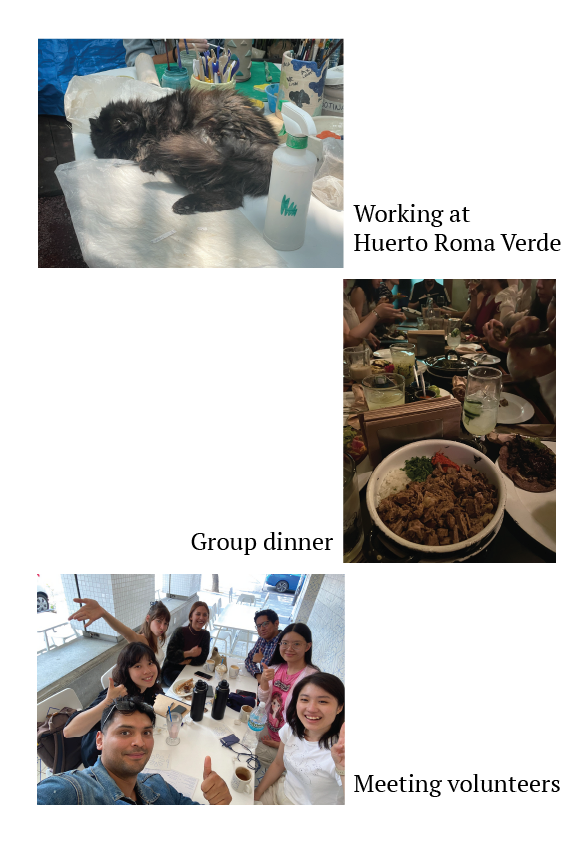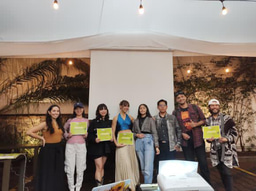LiA MakeSense_Mexico_Week 3 Reflection

Huerto Tlatelolco
This week, we visited Huerto Tlatelolco, a model of urban sustainability that has regenerated and transformed an underutilized area into an educational and productive orchard, benefiting the local community in Mexico City. We were introduced to how sustainability is realized through the seed bank, the composite using worms and bacteria, the dry toilet, and plenty of organically nourished plants. The experience of the three projects in the orchard encloses us in the action of this community. Under guidance, we learned how to transplant flowers, plant seeds, and process composite with our hands and full hearts—meditating under the tree, touching the earth, harvesting the fruits, and enjoying the green salad we made together after the labour is a precious experience that reconnects us to the earth and reflects on our lifestyle.

Working with volunteers
We started formally connecting and working with the volunteers this week. The training session with Make Sense prepared us for the work in progress with volunteers, as we got to learn how to empathize, motivate, and engage our volunteers better by setting clear goals and creating a sense of belonging. Despite the online meetings we have been hosting to introduce the projects and the main contributions we expected from our volunteers, we were also lucky to meet our volunteers in person. As for the projects in Huerto Roma Verde, we met our volunteers at a Mexican café, where we got to try churros and share delightful moments with the volunteers. The conversation brought us closer, clarifying the projects, getting to know each other, and building up the trust between us. Fervently, I enjoy learning from different people, listening to each other’s stories, and trying to bring out the best of each other in the projects.

Designing our mascots
As the projects progressed, my main job this week was designing Huerto Roma Verde's mascot. The mascot is significant to our project because it will be a visual guide to attract and help people digest the information on the board and reinforce the community identity. I drafted out one of the first versions of the mascot, combining the Mexicans’ beloved animal axolotl and the shape of green leaves. Then, we hosted a mascot campaign to let the volunteers vote out their favourite version. After deciding on the version, I kept working with Nadia on the mascot's design. We aimed to make different mascot designs based on the various spots in Huerto Roma Verde. Nadia helped with the sketch, and I was to finalize them into illustrations. For example, the half-finished draft of the mascot shown in the picture is for a healing place where people can have meditation and therapy. Designing the mascot has been the most enjoyable part of the journey, as I fell deeper and deeper in love with the concepts and ideas that Huerto Roma Verde has been acting accordingly. The mascot is a visible cartoony figure that relates people to identify with the core concepts.



Please sign in
If you are a registered user on Laidlaw Scholars Network, please sign in